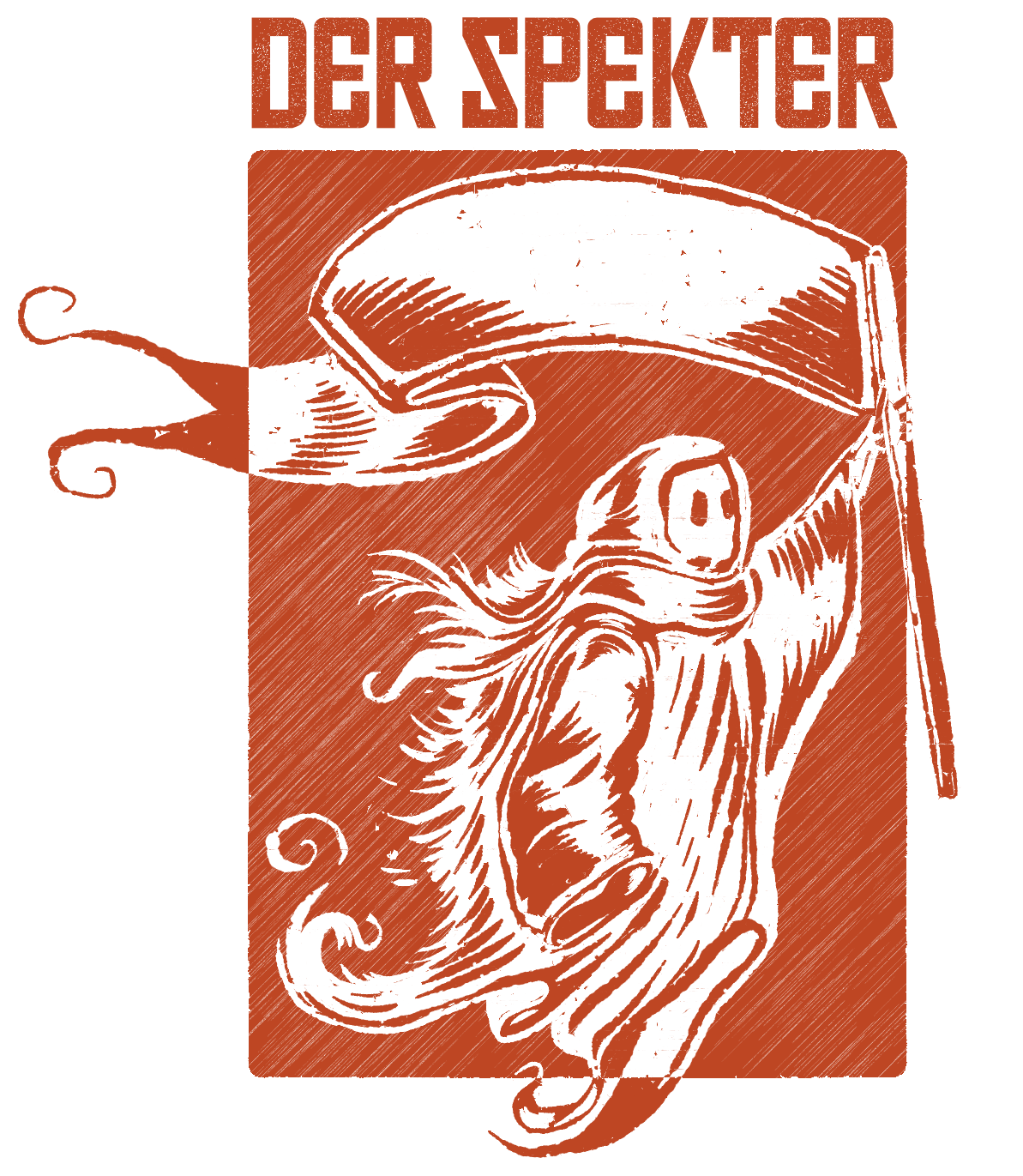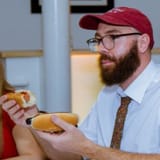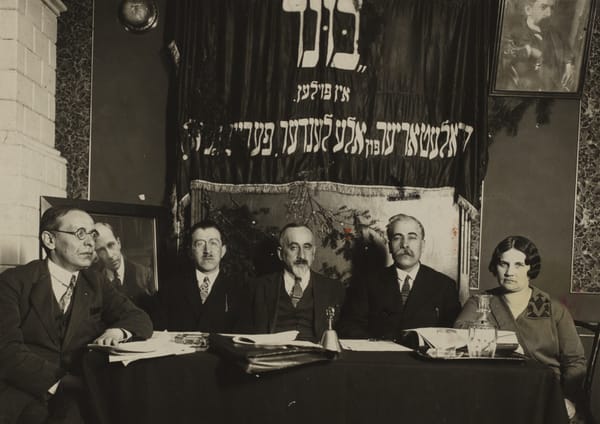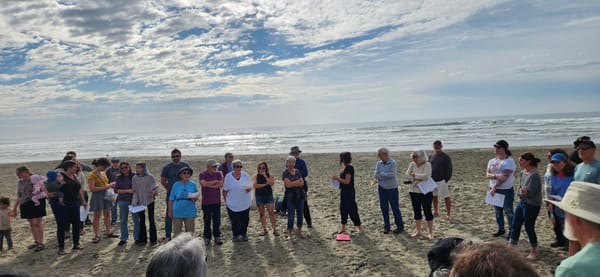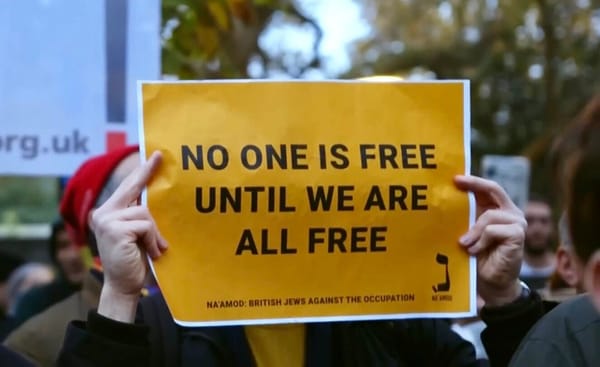How the Pillars of the Bund Can Guide Local Organizing
The DMV Bund's establishment of "committees" based on the three pillars of the Bund allow organizers to better manage responsibilities and maintain organizing capacity.

Since July 2024, I have been organizing with the DC, Maryland, and Virginia (DMV) Bund. (1) When I first got involved, it had been a mishmash of organizers that had been working day in and day out for Palestinian liberation and folks tangentially interested in the Bund but with little capacity to push efforts forward. But by September, we were able to host an online teach-in called “The Jewish Labor Bund: Continuing the Legacy of the Jewish Left.” This initial teach-in connected us to folks who are active in the DMV Bund today. From there, we built.
Building local organizing capacity can be difficult, especially when efforts are tied to a new organization taking on the lofty goal of building an anti-Zionist political and cultural home for Jewish people throughout the diaspora. This is a monumental task; as Zach Smerin noted in his essay Bundism Today: A Case for Jewish Autonomist Diasporist Socialism, “...if we are to claim descent from the organisation founded in 1897, there needs to be a sense of structure, scope and legitimacy to the effort.”
Structure, scope and legitimacy are essential to building the Bund at the international level as well as in our local communities. For us, the pillars of the Bund, Yiddishkayt (Jewishness), Doikayt (Hereness) and Khavershaft (Solidarity) (2) have provided a structure to build locally. They guide the work we have done and provide a clear path forward for the work we want to do.
To accomplish these tasks, the DMV Bund has established “committees” based on the three pillars, where organizers are able to dedicate their energies to certain activities, giving our primary communication channels space to breathe.
The Local Context of organizing in the DMV
Washington, DC is typically perceived as a very specific thing. It is congressional representatives and their staffers, a stock of lobbyists willing to sell their soul to reach that next rung of the ladder, fresh-faced college grads trying to make their way in the political landscape. Much of this is true, though it paints an incomplete picture of what this area is and who lives here. DC and the surrounding counties are incredibly diverse, with Black residents representing the largest demographic in the city (3). The city has gotten progressively whiter, and gentrification displaces the native population as affordability becomes scarce. This reality is not unique; many American cities are going through similar changes, but this makes it even more important to consider how we show up as a predominantly white, Ashkenazi group.
By virtue of DC’s political role, the area has an incredibly robust movement scene. In Jewish organizing spaces, Jewish Voice for Peace, If Not Now, Never Again Action, Jews United for Justice, and an uncountable number of other autonomous groups exist. Outside of Jewish organizations, Palestine Youth Movement, Students for Justice in Palestine, Party for Socialism and Liberation, DC Communist Party, and DC for Palestine all work towards Palestinian Liberation through their own lens. Outside of Palestinian Liberation work, there are countless mutual aid efforts and groups pushing for other causes like prison and police abolition, DC statehood, and other hyper local causes. The field is crowded.
When we began our organizing efforts, we wanted to avoid stepping on the toes of other organizations. In the DMV area, the robust movement infrastructure means that there is not much of a need to plan protests or actions. This work is already being done and there is significant value in elevating Palestinian voices rather than being a domineering voice. Members typically show up to actions in solidarity as individuals, as they did before the DMV Bund found its footing. Accepting this reality, that a lot of the work was already being done, gave us a clearer picture of how we could start to organize locally — working in solidarity with other local organizations, political education, and providing spaces to experience Jewishness in diaspora. Our organizing is framed by the context of where we live. What works in the DMV could not be applied in the same way if we were in Montana or Europe.
DMV Bund Organizing “Committees”
When the DMV Bund figured out what role we wanted to play locally, we explored different ideas for ways to get things done while still maintaining the non-hierarchical structure that we strive for locally. Our core conveners handle the administrative work but everyone is empowered to pick up the Bund banner and coordinate DMV Bund members around a project. We will continue to experiment to get this right.
Our organizing structure presented a problem: how can we build capacity while having a structure to organize now in a way that sets us up to do more down the line? DMV Bund members want to do a lot and there is a lot to be done. Moving forward without the infrastructure in place — whether that means simply having the bodies or an agreed-upon structure to do the work — would lead to burn out.
One way we have tried to tackle these issues is through forming “‘committees” guided by the organizing principles and pillars of the Bund: Yiddishkayt, Doikayt, and Khavershaft. Functionally, these committees are Signal groups designed to narrow the scope of the conversation. Organizers can focus on a specific topic, though, as we are all Jews, there is overlap and debate about which projects should live where. The committees (theoretically) function as follows:
- Yiddishkayt - This group plans activities that allow us and our community to connect to our experience of Jewishness in diaspora.
- Doikayt - This group plans political education and formal responses to local matters.
- Khavershaft - This group works on building solidarity and relations with other groups and organizers.
From these groups we have been able to continue building on the work that we started last summer. We have regular, monthly Yiddish cultural programming, rotating back and forth between Yiddish singing and movie nights; we organized an “anti-Zionism is not antisemitism” teach-in in partnership with other organizations as part of protests targeting Chuck Schumer’s book tour(4); and we continue to build relationships with local Palestinian solidarity organizations, spearheaded by a formal partnership with DC for Palestine’s Apartheid-Free DC campaign.
This is not to say that we have resolved all of our local organizing issues. Communication and capacity issues sit at the forefront. Even now we are actively discussing communication norms that would likely remove these “committee chats.” What will be important as we continue to evolve is ensuring that the guiding principles inform our work. We are a growing organization and have many ideas about what work we would like to do and how we can best accomplish it. But if we dive headfirst it may be unsustainable. Building capacity is essential to carrying out that work and having committees that align with our principles help define them more clearly for people who are interested in organizing with us. The committees play a dual role of defining the work and helping us build capacity to do more. It is a cyclical process that helps us grow.
There is so much we want to do so we are excited to continue to build locally. Building out a mutual aid infrastructure, support for local workers and expanding deeper into Jewish diasporic programming are all ideas that have been raised internally. It will be exciting to see how we get there. As we grow, will these committees still exist in the way they do now? It is hard to say, but for now they have been crucial in defining the work we are doing.
(1) Wow, look at you, making such an original joke. “Department of Motor Vehicles Bund,” so clever, we have never heard that one before. In all seriousness, the DMV is a shorthand term for the DC metro area, including DC and the surrounding counties. This is a flexible term, meaning different things for different people, but generally refers to DC proper, Arlington County, VA, Alexandria, VA, Montgomery County, MD, and Prince George's County, MD.
(2) We employ “khavershaft” rather than “socialism” as the third pillar of the Bund due to its more action-oriented and accessible implications.
(3) Until 2015, DC’s population was majority black.
